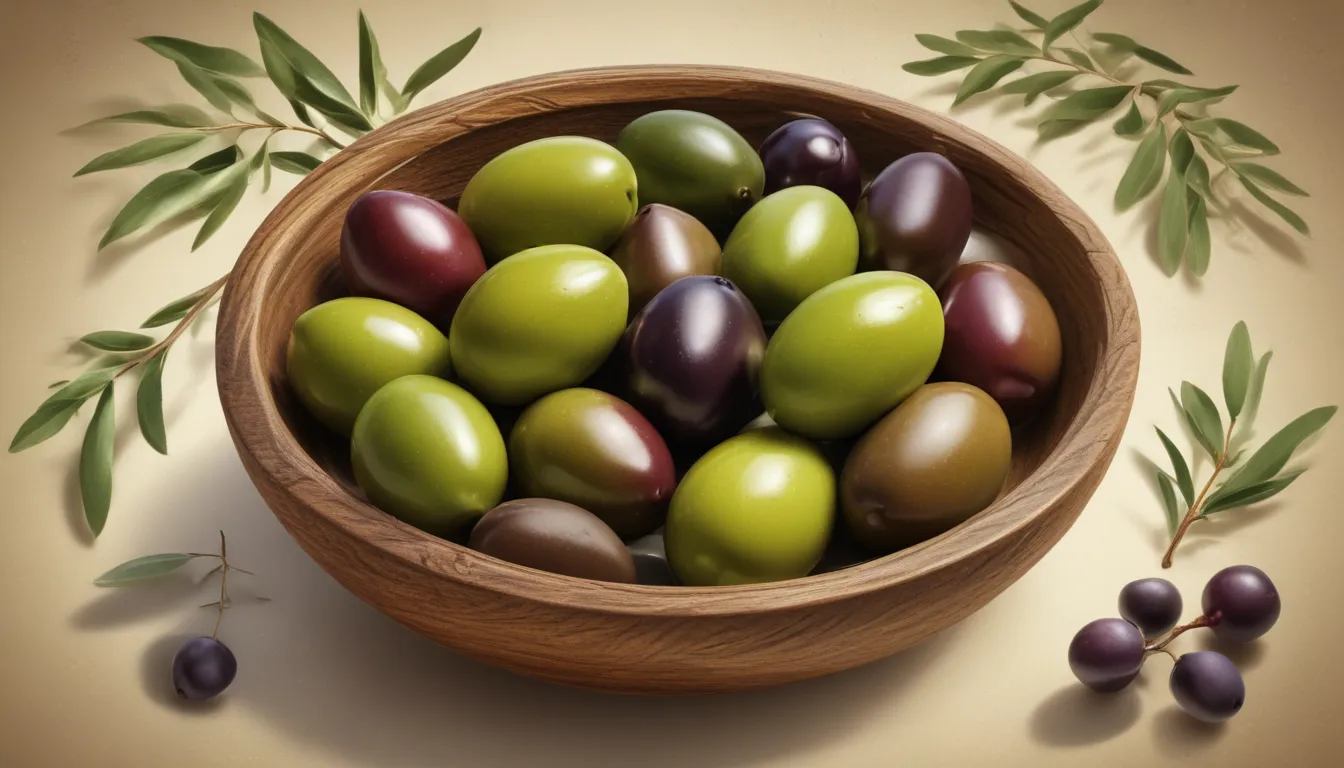The pictures in our articles might not always show exactly what the text is talking about. We use these images to make the article more interesting and eye-catching. They are there to add to the text, but not to replace it or show every detail.
Olives are not just a tasty addition to your favorite dishes - they are a symbol of history, health, and culinary delight. With over 2,000 varieties and a rich heritage, olives offer a world of flavors and benefits waiting to be explored. Let's dive into the wonderful world of olives and uncover 12 fascinating facts that will deepen your appreciation for these versatile fruits.
Unveiling the History and Symbolism of Olives
The olive tree has long been associated with peace, prosperity, and abundance. Ancient Greeks crowned victorious athletes with olive branches, symbolizing both victory and peace. This rich symbolism has carried through the centuries, making olives not just a fruit but a powerful emblem of history and tradition.
The Nutritional Powerhouse of Olives
Don't let their small size fool you - olives are packed with healthy fats that can benefit your heart health. Rich in monounsaturated fats, olives offer a delicious way to promote overall well-being and reduce the risk of cardiovascular diseases. Their antioxidant properties also make them a valuable addition to a healthy diet.
The Colorful World of Olive Varieties
With over 2,000 different varieties of olives to choose from, there is a world of flavors waiting to be explored. From the bold taste of Kalamata to the delicate notes of Manzanilla, each variety offers a unique culinary experience. Whether you prefer green, black, or purple olives, there is a flavor profile to suit every palate.
Olives in Mediterranean Cuisine
Olives are not just a staple in Mediterranean cuisine - they are an essential ingredient that adds flavor and nutrition to a wide range of dishes. From olive oil to tapenades and salads, olives play a central role in this vibrant culinary tradition. Their robust flavors and health benefits make them a must-have in any Mediterranean-inspired meal.
Decoding the Color Mystery of Olives
Contrary to popular belief, black and green olives come from the same tree. The difference in color is a result of the olives' maturity and the processing method used. Green olives are harvested earlier, while black olives are left to ripen on the tree, resulting in their distinct color.
The Antioxidant Superpowers of Olives
Olives are a natural source of antioxidants, including polyphenols, that can help protect your cells from damage and reduce inflammation. These powerful antioxidants play a key role in lowering the risk of chronic diseases and promoting overall well-being. So, enjoy your olives guilt-free knowing they are nourishing your body from the inside out.
The Enduring Legacy of Olive Cultivation
The cultivation of olives dates back over 6,000 years, making them one of the oldest known cultivated crops. From ancient civilizations like the Greeks, Romans, and Egyptians to modern-day producers, olives have played a significant role in shaping culinary traditions and cultures around the world.
Spain: The Global Leader in Olive Production
With its ideal climate and vast olive groves, Spain has established itself as the largest producer of olives worldwide. Spanish olives are renowned for their quality and flavor, making them a sought-after ingredient in cuisines around the globe.
From Snacks to Main Courses: The Versatility of Olives in Cooking
Whether you're using olives as a topping for pizzas and salads or incorporating them into pasta sauces and braised meats, these versatile fruits can elevate any dish. Their tangy, briny flavor adds depth and complexity to a wide range of recipes, making them a kitchen staple for home cooks and chefs alike.
Harvesting Olives: A Blend of Tradition and Innovation
Olive harvesting can be done by handpicking or mechanical methods, depending on the desired quality and scale of production. While handpicking is preferred for premium olive oils, mechanical harvesting offers efficiency for larger-scale operations. This blend of tradition and innovation ensures a steady supply of olives for consumers worldwide.
Greece and Italy: The Heart of Olive Culture
Greece and Italy have a long history of olive cultivation and production, with their olive oils revered for their exceptional quality and robust flavors. These Mediterranean countries have preserved their olive-growing traditions for centuries, making them key players in the global olive industry.
Snacking with a Purpose: The Health Benefits of Olives
Whether you enjoy olives on their own or as part of a meal, these nutritious fruits offer a satisfying and energizing snack option. Packed with healthy fats, fiber, and antioxidants, olives provide a quick and delicious way to boost your overall well-being. So, indulge in a handful of olives guilt-free and savor their unique blend of flavors and nutrients.
FAQs About Olives
- **Olives are technically classified as fruits, not vegetables, as they are the reproductive structures of the olive tree.
- **Olives come in various colors, including green, purple, and black, depending on their ripeness at the time of harvesting.
- **Olives are good for you, offering healthy fats, antioxidants, and anti-inflammatory properties that benefit heart health.
- **Olives straight off the tree are bitter and inedible, requiring a curing process to enhance their flavor.
- **Stuffed olives are made from real olives, typically pitted and filled with ingredients like cheese or peppers for extra flavor.
- **Olives can be cooked with and are a versatile ingredient in soups, pasta, pizza, and other dishes.
- **Olives should be stored in a cool, dry place, preferably in a tightly sealed container to prevent spoilage.
- **Olives offer numerous health benefits, including monounsaturated fats for heart health and antioxidants that fight inflammation.
- **Olives are used to make olive oil, which is extracted from pressed olives and used for cooking and dressing dishes.
- **There are many types of olives, each with a distinct flavor profile, such as Kalamata, green Spanish, Castelvetrano, and black Mission olives.
Unraveling the World of Olives: A Journey of Flavor and Tradition
Explore the rich history, diverse flavors, and health benefits of olives as you embark on a culinary adventure like no other. From the symbolism of olive trees to the vibrant hues of different varieties, olives offer a tantalizing blend of taste and nutrition that will enrich your meals and delight your senses. So, embrace the olive's legacy and savor every bite as you discover the endless possibilities that these remarkable fruits have to offer.






